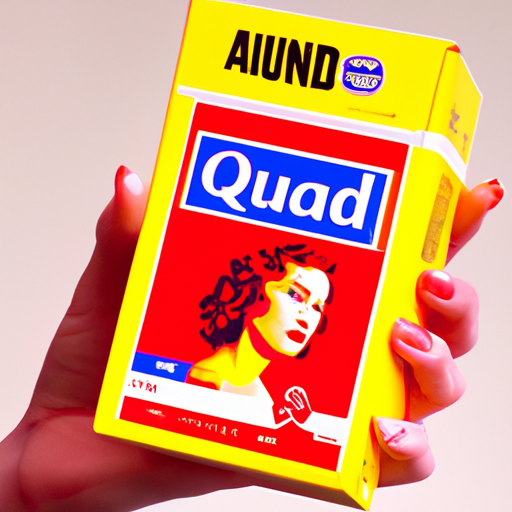
-
Table of Contents
Health and Wellness Packaging: Communicating Trustworthiness

When it comes to health and wellness products, consumers are increasingly concerned about the safety and efficacy of the products they purchase. With the rise of misleading marketing claims and the prevalence of counterfeit products, packaging plays a crucial role in communicating trustworthiness to consumers. In this article, we will explore the importance of health and wellness packaging in building consumer trust and provide valuable insights on how brands can effectively communicate trustworthiness through their packaging.
The Power of Packaging
Packaging is more than just a container for a product. It serves as a powerful tool for brands to communicate their values, differentiate themselves from competitors, and establish a connection with consumers. In the health and wellness industry, where consumers prioritize their well-being, packaging plays an even more significant role in building trust.
According to a study conducted by Ipsos, 72% of consumers believe that packaging design can influence their perception of a product’s quality and trustworthiness. This highlights the importance of creating packaging that not only catches the eye but also conveys a sense of reliability and authenticity.
Transparency and Information
One of the key elements of trustworthiness in health and wellness packaging is transparency. Consumers want to know what they are putting into their bodies and expect brands to provide clear and accurate information about their products. This includes ingredients, nutritional values, and any potential allergens or side effects.
Brands can communicate transparency through their packaging by prominently displaying key information in an easy-to-read format. This can be achieved through the use of clear and concise labels, nutritional facts panels, and ingredient lists. Including certifications and seals of approval from reputable organizations can also enhance the perception of trustworthiness.
For example, the organic food brand “Nature’s Path” uses packaging that prominently displays its organic certifications, such as the USDA Organic seal. This not only communicates the brand’s commitment to organic farming practices but also reassures consumers that the product meets strict quality standards.
Sustainable Packaging
In addition to transparency, consumers are increasingly concerned about the environmental impact of packaging. Sustainable packaging not only aligns with consumers’ values but also communicates a brand’s commitment to responsible practices.
According to a survey conducted by Nielsen, 73% of consumers are willing to pay more for products that come in sustainable packaging. This presents an opportunity for health and wellness brands to differentiate themselves and build trust by using eco-friendly materials and reducing waste.
Brands can communicate their commitment to sustainability through their packaging by using recyclable or biodegradable materials, minimizing the use of plastic, and incorporating eco-friendly design elements. For example, the skincare brand “Lush” uses minimal packaging and encourages customers to return their empty containers for recycling, reinforcing their commitment to reducing waste.
Design and Aesthetics
While transparency and sustainability are crucial, the visual appeal of packaging should not be overlooked. A well-designed package can capture consumers’ attention, evoke positive emotions, and create a memorable brand experience.
When it comes to health and wellness packaging, clean and minimalist designs are often preferred. This conveys a sense of purity and simplicity, aligning with consumers’ desire for natural and wholesome products. The use of calming colors, such as greens and blues, can also evoke a sense of tranquility and well-being.
Brands can leverage design elements such as typography, imagery, and color schemes to create packaging that communicates trustworthiness. For example, the vitamin brand “Ritual” uses a clean and modern design with a focus on typography to convey a sense of simplicity and transparency.
Case Study: The Honest Company
The Honest Company, founded by actress Jessica Alba, is a prime example of a brand that effectively communicates trustworthiness through its packaging. The company specializes in natural and eco-friendly products for babies, personal care, and home cleaning.
The Honest Company’s packaging design reflects its commitment to transparency, sustainability, and aesthetics. The use of clear labels with easy-to-read ingredient lists and certifications communicates transparency and provides consumers with the information they need to make informed choices. The packaging also prominently displays the brand’s mission and values, reinforcing its commitment to providing safe and trustworthy products.
In terms of sustainability, The Honest Company uses recyclable materials and incorporates eco-friendly design elements, such as minimalistic packaging and plant-based inks. This not only aligns with consumers’ values but also differentiates the brand from competitors.
Conclusion
Health and wellness packaging plays a crucial role in communicating trustworthiness to consumers. By prioritizing transparency, sustainability, and design aesthetics, brands can effectively build trust and establish a strong connection with their target audience.
Key takeaways for brands looking to communicate trustworthiness through their packaging include:
- Providing clear and accurate information about ingredients, nutritional values, and potential allergens
- Including certifications and seals of approval from reputable organizations
- Using sustainable materials and minimizing waste
- Creating clean and minimalist designs that evoke a sense of purity and simplicity
- Communicating the brand’s mission and values through packaging
By implementing these strategies, brands can not only gain the trust of consumers but also differentiate themselves in a competitive market, ultimately leading to increased sales and brand loyalty.
